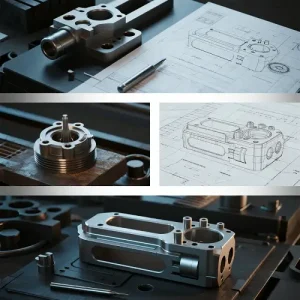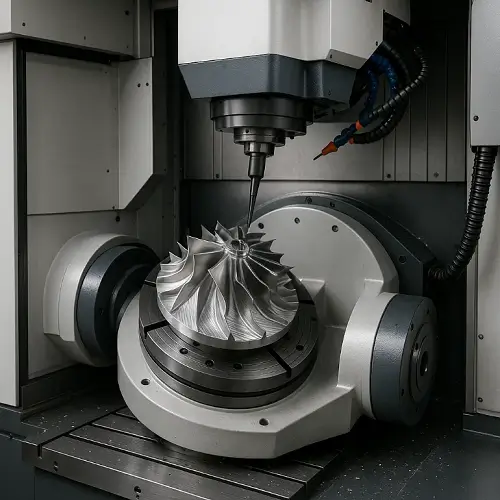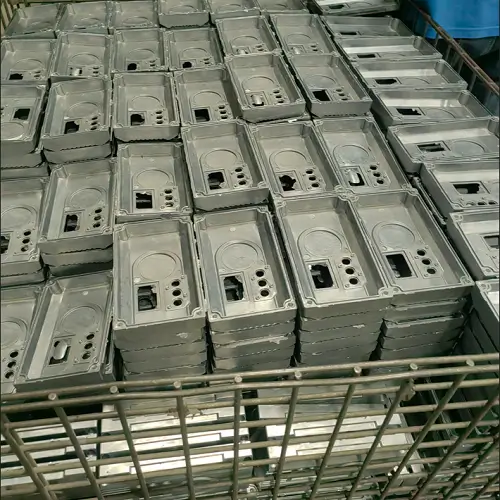Transitioning from prototype to production is one of the most critical stages in any product development cycle. What works during prototyping doesn’t always translate smoothly into production, especially when it comes to balancing cost, speed, and precision. Missteps here can lead to delays, increased expenses, and compromised product quality.
CNC machining plays a vital role in bridging this gap—particularly for teams aiming for low-volume production without investing in tooling. But to take full advantage of it, you need more than just machines—you need a clear process strategy.

Why the Shift From Prototype to Production Matters
In early prototyping, the focus is typically on learning and exploring ideas. Fast turnaround and design flexibility are the priorities. Tolerances are often relaxed, material selection is based on convenience, and minor flaws are acceptable.
But once you approach production—even in small batches—the priorities shift. Repeatability, dimensional accuracy, material consistency, and finish quality begin to matter more. Parts must not only function but fit together across multiple units.
Failing to recognize this shift is one of the most common sources of waste in short-run manufacturing. It’s not enough to build one good prototype—you need to reliably build hundreds or thousands of parts that perform the same way.
CNC Machining: A Scalable Solution
CNC machining offers a unique advantage at this stage. Unlike molding or die-casting, it requires no tooling investment, which is ideal for limited production runs. It also provides:
High dimensional accuracy
Compatibility with a wide range of materials
Excellent repeatability
Suitable surface finishes for both functional and aesthetic parts
For quantities between 5 to 5,000 pieces, CNC remains one of the most efficient and scalable options. At JeekRapid, many of our customers use CNC not only for prototypes but for production as well, without switching manufacturing methods in between.
Balancing Precision, Cost, and Lead Time
The challenge lies in managing trade-offs. Most parts can’t be optimized for all three—some compromise is inevitable. Knowing where to make those trade-offs is key to a successful transition.
Precision
Over-specifying tolerances can drive up machining time and cost without improving part performance. During production, it’s important to distinguish:
-
Critical features – holes for alignment pins, mating surfaces
-
Visual zones – areas visible to end-users
-
Non-functional areas – internal pockets, unimportant faces
Each category may justify different tolerance levels. For instance, ±0.01 mm may be necessary for a bearing fit but completely unnecessary for an external bracket.
Want to learn how precise your CNC part really needs to be?
Check out our in-depth guide: How Precise Can CNC Machining Tolerances Be?
We explain what tight tolerances mean in practice and when they’re worth the extra cost.
Cost
Cost efficiency often comes down to smart design and setup choices. For example:
Reduce the number of separate setups by aligning part features
Avoid extremely thin walls that require slow toolpaths
Choose materials that are easy to machine, like 6061 instead of 7075 if strength allows
Eliminate features that require special tooling unless functionally necessary
Many cost drivers in CNC are not about part size but about complexity. A simple part can be ten times cheaper to produce than a geometrically complex one of the same size.
Lead Time
Lead times are often affected by the number of part revisions, the availability of raw materials, and secondary operations like surface finishing. When moving to production:
Lock design before ordering
Use materials with short supply chains
Avoid unnecessary finishing in early batches
Accept visual imperfections on non-customer-facing parts where possible
In our experience, customers who apply even small design-for-manufacturing (DFM) adjustments can reduce production time by 20–40% per batch.
CNC Strategies That Support Scaling
Different types of CNC strategies can support different goals. Below are three that we commonly implement at JeekRapid:
Prototype → Adjusted Batch Production
After confirming the prototype design, minor revisions can improve machinability. These include adding fillets to sharp corners, standardizing hole sizes, or adjusting wall thickness.
Modular Component Testing
Instead of validating an entire assembly at once, test subsystems individually. Once verified, bring each module into production on its own timeline.
Bridge Production Using CNC Before Tooling
For parts that will eventually go into injection molding, CNC can handle initial units while molds are still in development. This ensures early access to real parts without delays.
Case Example: Consumer Wearable Housing
A startup developing a fitness tracker came to us for early-stage aluminum housings. They began with five units for testing. After a successful pilot, they needed 800 housings for launch—delivered in less than 30 days.
We made small modifications to the original design:
Adjusted internal corners for easier tool access
Switched from 7075 to 6061 aluminum
Used a more efficient 3-axis machining setup
All 800 units were delivered with consistent quality and no delays. They stayed on schedule and within budget—without ever building a mold.
Make the Transition Smooth
Scaling from prototype to production doesn’t require a full redesign or a shift to entirely new methods. With the right CNC strategy, it’s possible to achieve high repeatability, fast turnaround, and reasonable cost—even in low volumes.
At JeekRapid, we help bridge this gap. From design evaluation to CNC process selection, we provide manufacturing strategies that support your goals at every stage.
Ready to move from prototype to production?
Upload your drawings today. Our engineers will review your design and provide a DFM report and quote within 24 hours.
Request a Quote


